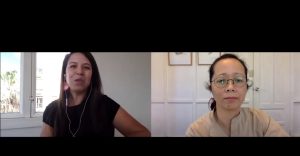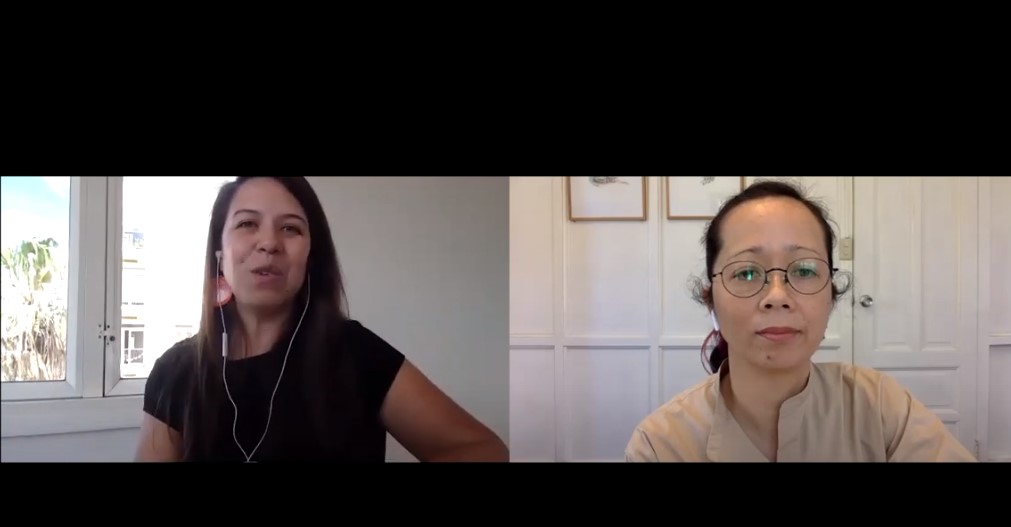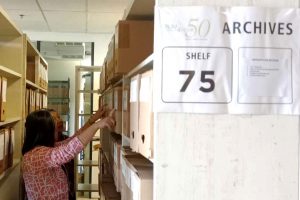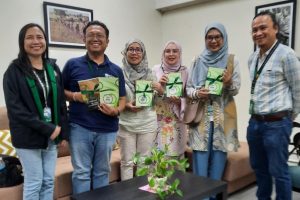So Many Stories, So Little Time: The Arduous Trade of Palawan’s Busyadors
 “Before the islands were bought, we were the ones guarding the place. But now that the islands have been sold, [the harvest] is prohibited there…”
“Before the islands were bought, we were the ones guarding the place. But now that the islands have been sold, [the harvest] is prohibited there…”
This retelling of the sad history of livelihood among the Tagbanua and Cuyunon indigenous groups was relayed by political ecologist and human geographer Dr. Paula Satizábal in her webinar entitled “Seascape Shadows: The Precarious Lives of Edible Bird’s Nests Harvesters in Northern Palawan, the Philippines” on November 18 via Zoom. Based on fieldwork conducted in 2018 in El Nido, which coincidentally translates as “nest,” the presentation provided space for the unheard voice of the harvester or busyador following the movement of balinsasayaw or swiftlets during breeding season, against the vivid backdrop of sea, karst caves and forest. At the same time, it documented the busyador’s plight of having to navigate the “erratic regulations and enclosures that marginalize the trade into the shadows of Palawan’s seascapes.” Using the tool of seascape assemblage in her analysis, Dr. Satizábal was able to link the relationships that emerge through the different interactions involved in harvesting, such as governance schemes, regulation, and institutions.
Tracing the origins of nest harvesting and trade in the Philippines to the Song Dynasty, Dr. Satizábal shared that nests, together with bees wax and rattan, were among the goods offered to Chinese merchants and to Tausug from the Sulu archipelago. Known as the “caviar of the East,” bird’s nests are now one of the most expensive animal products on the planet, prized for their health benefits and social prestige, and selling for as much as USD3000 per kilogram. However, for the busyador, the process of weighing and classification is a corrupt one, with the concessioner or middleman usually devaluing the nests brought to them and profiting from the transaction. For this reason, it was pointed out that there is no reason to romanticize the pre-Hispanic bird’s nest trade, since patron-client relations have been abusive from the start. Like the Biblical dog eating scraps that have fallen from the Master’s table, busyadors are reduced to consume the leftovers or sinisa after nests are cleaned, eating them as porridge or roasting them in coconut shells for medicinal use.
The situation becomes more distressing considering the peril that busyadors face in harvesting. Waiting at dusk “at sea or on top of coastal cliffs or mountains” to track the balinsasayaw as they return to their nests, the process requires not only patience but conquering a fear of heights and darkeness, and developing skills like rock climbing. As one busyador recalled, “When I was new in doing the harvest, it was very hard for me and I was scared…Those who taught me, told me not to be afraid…it’s just a matter of practice and being mindful of what we do.” It was noted that “Discovered and inherited nests are treasured by busyador, who often name them after their distinctive characteristics or particular memories.” Still, harvesting remains a high-risk endeavor, and injuries and death are not uncommon.
Moreover, while harvesting is generally done by families, locating nests is an individual pursuit, and caves are guarded “to prevent unwanted intrusions and nest theft.” The metaphor of shadow is used in the study to depict that nesting places are kept hidden. Busyador themselves must likewise conceal their presence when following balinsasayaw to keep the birds from flying away. But shadows are also used to describe the secrecy in hiding involvement in “shadier” dealings, such as when busyadors engage in illegal harvests because of insufficient income stemming from the cheap prices fixed by concessioners. The length of harvest season itself and nest locations can vary, thus presenting a challenge in order to earn steadily—thus, some busyadors are compelled to enter the tourism sector. Yet even when working for hotels, busyadors must remain hidden, because tourists come “to see paradise” and “the beautiful beaches with no one there.” They do not come to see coastal life and the livelihood unfolding there.
The shadow image extends to the secrecy from which violence emerges, as when high-powered guns appear in the quest for more nests. Enforced separation of the busyadors from the caves they protect further occurs when local governments implement cave registration, concession and licensing systems as “legal means” that privilege those in power. Yet even restaurant owners shied away from the research team when they attempted to identify where and how nests were being traded. More light, Dr. Satizábal suggested, needed to be shined on these many dark spaces.
She did recount, however, an interesting aspect of her time in El Nido. Previously, she said, while doing a study on small-scale fishing communities in her native Colombia, she herself did the legwork in seeking informants that were willing to participate in interviews. For the nest harvesting study, the opposite occurred: “Many busyador were coming to us, wanting to share their stories,” Dr. Satizábal revealed. “We benefited a bit from that, from the space that was allowed because of their interest in what we were doing. There was a snowball of opportunities of talking to different families and individuals that helped us grasp more of these complexities.” Her one regret was that they had very little time to spend in the community—an obstacle to understanding more of the dynamics of what was going on.
Dr. Satizábal concluded that “a fair and just way out of this will require an important conversation about the role of management,” but she saw this as a real challenge, given the nature of concealment surrounding the trade. She saw initiatives such as the National Cave Resources ad Protection Act and the Wildlife Resources and Conservation and Protection Act as being more harmful to the busyador and the balinsasayaw, if the goal is sustainability. As “control is still in the hands of the very few,” governance and political will were seen as imperative in providing space for harvesters to participate. As moderator Dr. Padmapani Perez suggested, a new kind of listening was needed on the part of those who occupy positions of privilege. And perhaps anthropologists can make that push.
The study “Seascape Shadows: The Precarious Lives of Edible Bird’s Nests Harvesters in Northern Palawan, the Philippines” was co-authored by Wolfram H. Dressler, Eulalio R. Guieb III, Jessie G. Varquez, Jr., and Michael Fabinyi, and was supported by the Australian Research Council and the University of Melbourne. The presentation was hosted by the Department of Sociology Anthropology (DSA)-Anthropological and Sociological Initiatives of the Ateneo (ASIA) at Ateneo de Manila University, as part of the 42nd Annual Conference of the Ugnayang Pang-Aghamtao, Inc. (UGAT). The Luzon Regional Conference is co-hosted by the DLSU Social Development Research Center.





